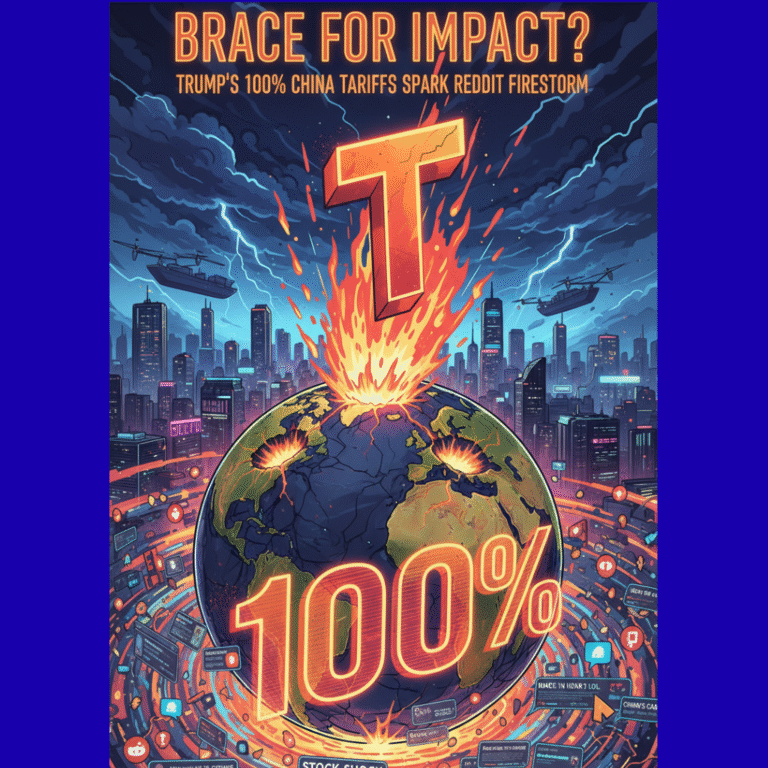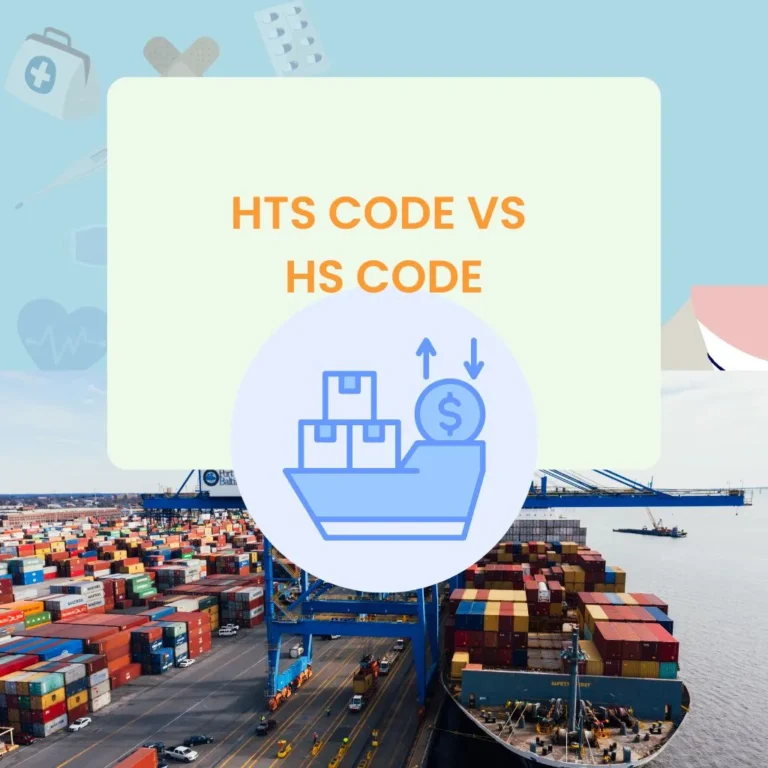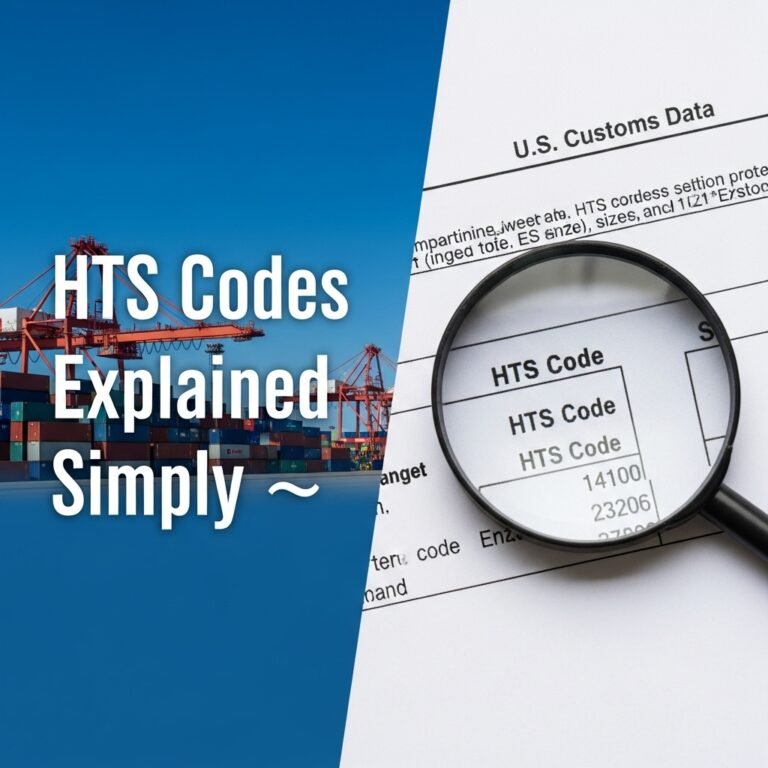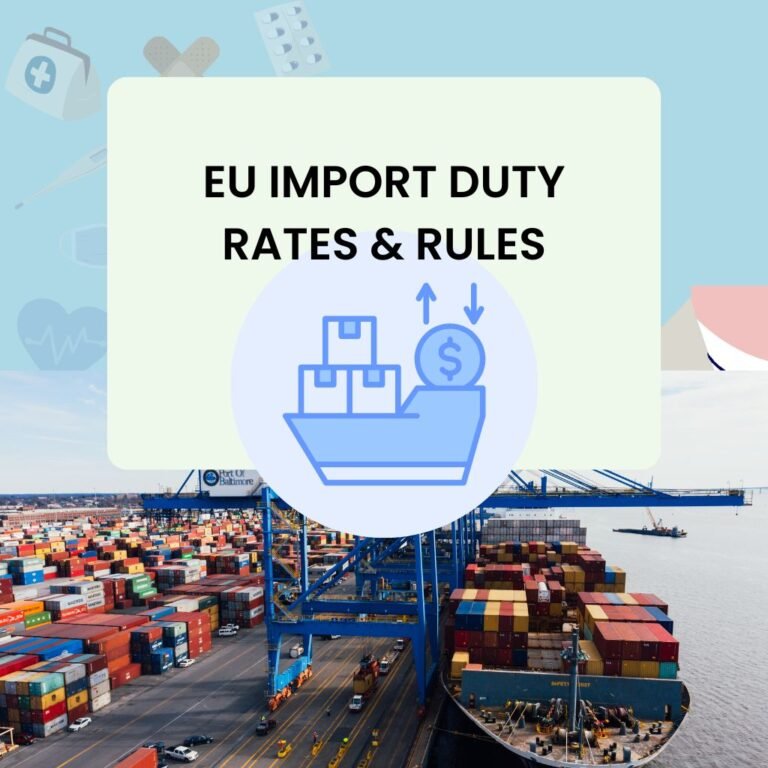Tariff vs Duty – What’s the Difference?
Tariffs and duties are related but distinct customs terms. A tariff is a government-defined rate applied to imported goods, while a duty is the actual amount paid based on that rate. If you’re an importer, exporter, or international shopper, knowing the difference can help you avoid confusion, manage costs, and stay compliant with border regulations.
TOC
Table of Contents
What Is a Tariff?
A tariff is a tax imposed by a government on imported or exported goods. It’s essentially a policy instrument used in international trade to regulate imports, protect domestic industries, or raise revenue.
In simple terms, a tariff sets the rate of tax to be applied on certain goods.
For example:
- Japan might impose a 5% tariff on imported footwear.
- The United States might have a 0% tariff on laptops from Free Trade Agreement (FTA) countries.
Tariffs are defined at a policy level and usually published in a Customs Tariff Schedule — a structured list of goods and their corresponding tax rates based on HS (Harmonized System) codes.
Types of Tariffs
- Ad Valorem Tariffs – Calculated as a percentage of the item’s value (e.g., 10% of the product’s CIF price).
- Specific Tariffs – A fixed charge per unit, weight, or volume (e.g., $3 per kilogram).
- Compound Tariffs – A combination of ad valorem and specific tariffs.
Tariffs can also vary by country of origin, especially when trade agreements or sanctions are involved.
What Is a Duty?
A duty is the actual tax amount applied to goods based on the tariff rate.
In other words, tariffs are the rates, and duties are the payments.
For example, if the tariff rate on imported leather shoes is 5%, and your shipment is worth $10,000, then your import duty is $500.
Types of Duties
Duties can fall under several categories depending on what’s being taxed and why:
- Import Duty – Charged on goods entering a country.
- Export Duty – Applied to goods leaving the country (less common).
- Excise Duty – A domestic tax on specific goods (e.g., alcohol, tobacco, fuel).
- Anti-Dumping Duty – Additional duty to protect local industries from cheap, below-cost imports.
- Countervailing Duty (CVD) – Applied to offset subsidies given by foreign governments to exporters.
Each type of duty serves a different economic or protective purpose, but import duties are the most common and widely discussed.
Tariff vs Duty
Here’s a breakdown of how tariffs and duties differ conceptually and functionally.
| Aspect | Tariff | Duty |
|---|---|---|
| Definition | A schedule or list defining tax rates on traded goods | The actual tax amount payable based on tariff rates |
| Nature | Policy or rate | Monetary charge |
| Purpose | To regulate trade and protect domestic markets | To collect revenue from import/export transactions |
| Scope | Broader; applies to categories of goods | Specific; applies to individual shipments |
| Authority | Set by governments or international agreements | Enforced by customs authorities |
| Example | 10% tariff on imported clothing | $1,000 duty paid for $10,000 shipment |
Simple Analogy
Think of it this way:
Tariff = Price tag (the rate)
Duty = The bill (the amount you pay)
Governments publish tariffs; customs officials collect duties.
Why Do Tariffs Exist?
Tariffs serve multiple economic and political objectives. They aren’t just about revenue — they shape global trade dynamics.
1. Protect Domestic Industries
Tariffs make imported goods more expensive, encouraging consumers to buy locally produced items.
This protects domestic manufacturers from being undercut by cheaper foreign products.
2. Generate Government Revenue
Before income taxes became common, tariffs and customs duties were a major source of government income.
Even today, they remain a reliable revenue stream, especially in developing economies.
3. Encourage Fair Trade
Tariffs help regulate trade imbalances and can serve as leverage in trade negotiations.
They also protect domestic jobs and industries from dumping — when foreign companies sell goods below cost.
4. Environmental and Social Controls
Modern tariffs sometimes promote ethical or sustainable trade — for example, higher tariffs on high-carbon goods or tariff reductions for eco-friendly imports.
How Tariffs and Duties Work Together
Tariffs and duties function like theory and practice — one defines the rule, the other enforces it.
Here’s how the process typically works:
- A government publishes a tariff schedule listing all products and their duty rates.
- When goods are imported, customs officials check the product’s HS code to determine the applicable tariff.
- The duty is then calculated based on the value or quantity of goods.
- The importer pays the duty before the goods are released.
This system ensures that every product entering the country is taxed fairly and consistently.
Global Examples of Tariffs and Duties
Keywords: tariff examples, customs examples, import duty calculation
United States
- Tariffs are published in the Harmonized Tariff Schedule (HTSUS).
- Duties are collected by U.S. Customs and Border Protection (CBP).
- Example: A 2.5% tariff on leather goods means a 2.5% import duty per shipment value.
European Union
- Uses the Common Customs Tariff (CCT) across all member states.
- VAT and excise duties are added separately.
Japan
- The Customs Tariff Schedule defines rates; Japan Customs collects duties.
- Also applies a 10% consumption tax on all imports.
Australia
- Tariffs are based on HS codes; most general goods attract 5% duty, plus 10% GST.
These examples show that while tariffs exist at a policy level, duties are applied operationally at customs.
Tariff Barriers vs Non-Tariff Barriers
It’s also worth noting that tariffs aren’t the only trade barriers.
| Type | Description | Example |
|---|---|---|
| Tariff Barrier | A financial charge on imports | 10% import duty on textiles |
| Non-Tariff Barrier | Administrative or regulatory restrictions | Quotas, quality standards, licensing |
Non-tariff barriers can sometimes have an even stronger impact than tariffs because they restrict quantities or market access rather than just adding cost.
Tariffs in Modern Trade Policy
In today’s globalized economy, tariffs are powerful political and economic tools.
1. Free Trade Agreements (FTAs)
Countries form FTAs to reduce or eliminate tariffs between members.
Examples include:
- USMCA (United States–Mexico–Canada Agreement)
- CPTPP (Comprehensive and Progressive Agreement for Trans-Pacific Partnership)
- EU–Japan EPA
2. Trade Wars and Retaliation
Tariffs are also used as a negotiation weapon in trade disputes.
For example, the US–China trade war involved reciprocal tariff increases on billions of dollars’ worth of goods.
3. Harmonization Under WTO
The World Trade Organization (WTO) encourages members to maintain transparent, predictable tariff schedules to support fair global trade.
Impact of Tariffs and Duties on Consumers
Tariffs and duties eventually affect everyone — from manufacturers to final consumers.
Higher Prices
When importers pay more in duties, that cost is usually passed on to the customer. This can make imported electronics, vehicles, or apparel more expensive.
Reduced Variety
High tariffs discourage imports, reducing the variety of foreign products available locally.
Economic Balancing
However, tariffs can protect local jobs and industries — especially in agriculture and manufacturing — helping maintain economic stability.
Do Tariffs Apply to Personal Imports?
Yes — but with exceptions. If you order goods online from another country, customs still applies the relevant tariff rate and import duty. However, low-value thresholds exist in many regions to simplify processing.
| Country | Low-Value Exemption | VAT/GST Applies? |
|---|---|---|
| USA | $800 (de minimis) | No federal VAT |
| UK | £135 | VAT always applies |
| Australia | AUD $1,000 | GST applies |
| Japan | ¥10,000 | 10% consumption tax applies |
| EU | €150 | VAT always applies |
So while personal imports can be exempt from duty, taxes like VAT or GST still often apply.
Tariffs vs Duties – Quick Summary
| Comparison Point | Tariff | Duty |
|---|---|---|
| Meaning | Tax rate or schedule on imports/exports | Actual tax collected on goods |
| Nature | Policy definition | Payment obligation |
| Level of Application | National or international | Transactional |
| Authority | Set by government or WTO | Collected by customs |
| Example | 10% tariff rate | $100 duty on $1,000 goods |
In short:
Tariffs define how much tax applies, and duties define how much you pay.
FAQ
Are tariffs and duties the same?
No. A tariff is the set percentage rate on imports, while a duty is the actual amount paid using that rate.
Why do countries use tariffs?
Governments use tariffs to protect domestic industries, raise revenue, control trade, or negotiate international agreements.
Is a tariff higher than a duty?
Not directly comparable. A tariff is a rate (e.g., 10%), while duty is the result (e.g., $1,000) based on the item’s value.
Do tariffs apply to personal imports?
Yes. But many countries allow duty-free thresholds for personal items, though VAT or GST may still apply.
Who sets tariff rates and collects duties?
Governments or customs authorities set tariff rates through trade policies. Customs agencies then collect duties during the import clearance process.
Can tariffs change over time?
Yes. Tariff rates can change due to trade agreements, economic policies, or geopolitical events like trade wars or sanctions.








